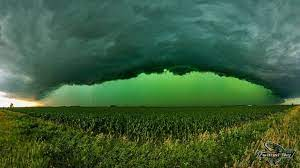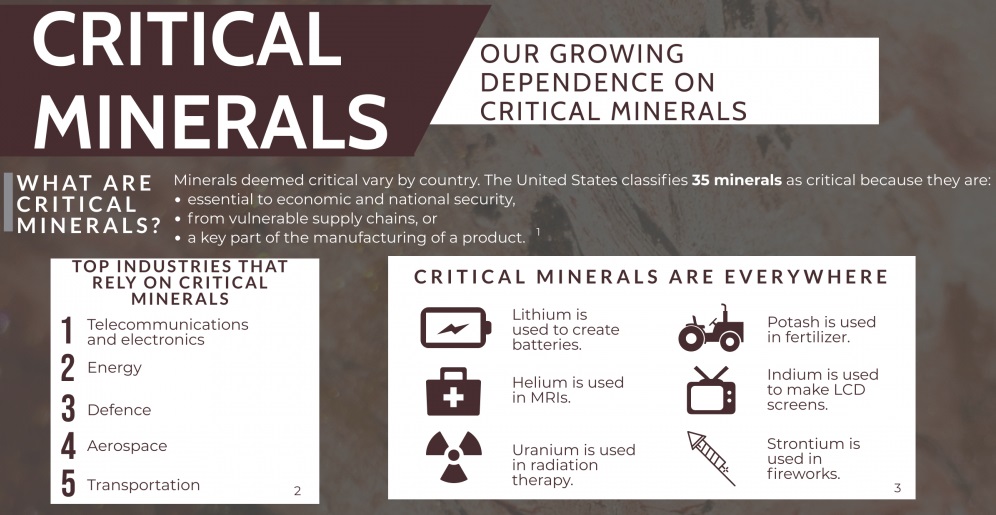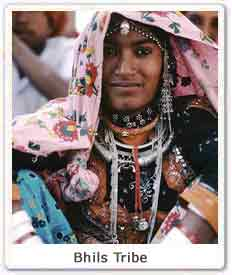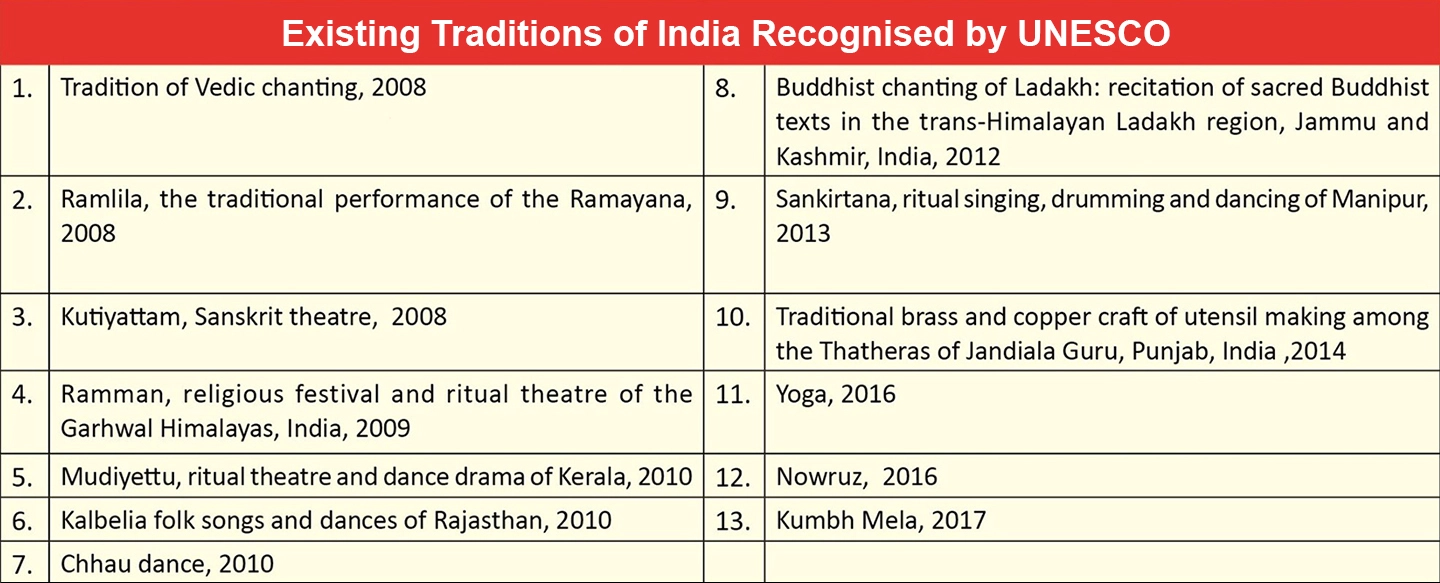Governance
Guidelines to Curb Unfair Advertisements
For Prelims: Consumer Protection Act, 2019, Initiatives for Consumer Protection
For Mains: New Guidelines to Curb Unfair Advertisements and Significance, CCPA
Why in News?
The Central Consumer Protection Authority (CCPA) recently issued guidelines to prevent false or misleading advertisements.
What is Central Consumer Protection Authority?
- About:
- CCPA is a regulatory body established in 2020 based on the provisions of the Consumer Protection Act, 2019.
- CCPA works under the administrative control of the Ministry of Consumer Affairs.
- Objective:
- To promote, protect and enforce the rights of consumers as a class.
- To conduct investigations into violation of consumer rights and institute complaints/prosecution.
- To order the recall of unsafe goods and services, discontinuation of unfair trade practices and misleading advertisements.
- To impose penalties on manufacturers/endorsers/publishers of misleading advertisements.
What are the Guidelines?
- Non-misleading and valid Advertisements.
- An advertisement can be considered non-misleading if it contains true and honest representation of goods and does not exaggerate the accuracy, scientific validity or practical usefulness or capability.
- In case of unintentional lapse, the advertisement may still be considered as valid if the advertiser has taken prompt action in letting the consumer know the deficiency.
- Surrogate Advertisements:
- Surrogate advertisement" refers to the advertisement of goods in the shadow of other goods.
- For example, the advertisement of tobacco in the garb of pan masala.
- No surrogate advertisement or indirect advertisement shall be made for goods or services whose advertising is otherwise prohibited or restricted by law.
- No circumventing of such prohibition or restriction and portraying it to be an advertisement for other goods or services shall be allowed.
- Surrogate advertisement" refers to the advertisement of goods in the shadow of other goods.
- Advertisements Targeting Children:
- Advertisements that condone, encourage, inspire or unreasonably emulate behaviour that could be dangerous for children or take advantage of children’s inexperience, credulity or sense of loyalty etc. have been prohibited.
- It goes without saying that advertisements tend to influence children’s buying behaviour and encourage them to consume unhealthy goods, or develop negative feelings toward healthy goods.
- Disclaimers in Advertisements:
- The guidelines have also introduced the need to have "disclaimers in advertisements" to clarify a claim made in such advertisement or make qualifications or resolve ambiguities therein in order to explain such claim in further detail.
- Moreover, the advertiser must not "attempt to hide material information with respect to any claim made in such advertisement, the omission or absence of which is likely to make the advertisement deceptive or conceal its commercial intent".
- Duties:
- The guidelines also impose duties on the manufacturers, service providers and advertising agency to not claim and make comparisons in an advertisement which relate to matters of objectively ascertainable facts.
- Moreover, the advertisement must be framed to gain the trust of the consumers and not to “abuse the trust of consumers or exploit their lack of experience or knowledge”.
What is the Significance of the Guidelines?
- The guidelines are pathbreaking because they fill significant consumer protection gaps while explicitly outlining advertiser duties.
- The guidelines also try to discourage the promotion of illogical consumerism aimed at children.
- The problem of misleading, bait, surrogate and children-targeted advertisement has festered without respite for far too long.
- The guidelines perform an essential function in bringing the Indian regulatory framework at par with international norms and standards.
- The guidelines are momentous in empowering customers against mischievous advertisers.
- The guidelines mention the conditions for defining a “non-misleading and valid” advertisement instead of defining what constitutes a misleading or invalid advertisement. This reduces the scope for exploitation of loopholes.
- The challenges in the enforcement of existing advertisement regulations have also been addressed by the guidelines through the imposition of stringent penalties.
What are the Initiatives for Consumer Protection?
International Relations
India-Australia Critical Minerals Investment Partnership
For Prelims: Critical Minerals, QUAD, Indo-Pacific Region, KABIL or the Khanij Bidesh India Limited.
For Mains: India and Australia Relations, India-Australia Critical Minerals Investment Partnership, Significance.
Why in News?
Recently, India and Australia decided to strengthen their partnership in the field of projects and supply chains for critical minerals.
- Australia confirmed that it would commit USD 5.8 million to the three-year India-Australia Critical Minerals Investment Partnership.
What are Critical Minerals?
- About:
- Critical minerals are elements that are the building blocks of essential modern-day technologies and are at risk of supply chain disruptions.
- Examples:
- Based on their individual needs and strategic considerations, different countries create their own lists.
- India’s Department of Science and Technology, in collaboration with the Council on Energy, Environment and Water, drafted the Critical Minerals Strategy for India in 2016, with a focus on India’s resource requirements till 2030.
- The Indian Critical Minerals Strategy has identified 49 minerals that will be vital for India’s future economic growth.
- Significance:
- These minerals are now used everywhere from making mobile phones, and computers to batteries, electric vehicles (EV) and green technologies like solar panels and wind turbines.
- Aerospace, communications and defence industries also rely on several such minerals as they are used in manufacturing fighter jets, drones, radio sets and other critical equipment.
Why are these Minerals Considered a Critical Source?
- Increased Dependency:
- As countries around the world scale up their transition toward clean energy and a digital economy, these critical resources are key to the ecosystem that fuels this change.
- Any supply shock can severely imperil the economy and strategic autonomy of a country over-dependent on others to procure critical minerals.
- As countries around the world scale up their transition toward clean energy and a digital economy, these critical resources are key to the ecosystem that fuels this change.
- Low Availability:
- These supply risks exist due to rare availability, growing demand and complex processing value chain. Many times, the complex supply chain can be disrupted by hostile regimes, or due to politically unstable regions.
- Increasing Demand:
- According to the United States (US) Government, as the world transitions to a clean energy economy, global demand for these critical minerals is set to rapidly increase by 400-600% over the next several decades, and, for minerals such as lithium and graphite used in EV batteries, demand will increase by even more as much as 4,000%.
- They are critical as the world is fast shifting from a fossil fuel-intensive to a mineral-intensive energy system.
- According to the United States (US) Government, as the world transitions to a clean energy economy, global demand for these critical minerals is set to rapidly increase by 400-600% over the next several decades, and, for minerals such as lithium and graphite used in EV batteries, demand will increase by even more as much as 4,000%.
What is the Significance of India Australia Partnership?
- Reduction in Emissions & Essential Demand: Australia has the resources to help India fulfil its ambitions to lower emissions and meet the growing demand for critical minerals to help India’s space and defence industries, and the manufacture of solar panels, batteries and electric vehicles.
- Expanding Global Trade: India’s strong interest and support for a bilateral partnership will help advance critical minerals projects in Australia while diversifying global supply chains.
- The Path to Achieve Clean Energy: India is among the fastest-growing economies in the world and there is huge scope for collaboration in the mineral sector. Technology transfer, knowledge-sharing and investment in critical minerals like lithium and cobalt are strategic to achieving clean energy ambitions.
How has been the India- Australia Trade Relations so far?
- Cordial Relations: India and Australia enjoy excellent bilateral relations that have undergone transformational evolution in recent years, developing along a positive track, into a friendly partnership.
- This is a special partnership characterised by shared values of pluralistic, parliamentary democracies, Commonwealth traditions, expanding economic engagement, long-standing people-to-people ties and increasing high-level interaction.
- India-Australia Comprehensive Strategic Partnership: It was initiated during the India-Australia Leaders’ Virtual Summit held in June 2020 and is the cornerstone of India-Australia multi-faceted bilateral relations.
- Trading Partners:
- India-Australia bilateral trade for both merchandise and services is valued at USD 27.5 billion in 2021.
- India’s merchandise exports to Australia grew 135% between 2019 and 2021. India’s exports consist primarily of a broad-based basket largely of finished products and were USD 6.9 billion in 2021.
- India’s merchandise imports from Australia were USD 15.1 billion in 2021, consisting largely of raw materials, minerals and intermediate goods.
- Others:
- India and Australia are partners in the trilateral Supply Chain Resilience Initiative (SCRI) arrangement along with Japan which seeks to enhance the resilience of supply chains in the Indo-Pacific Region.
- Further, India and Australia are also members of the QUAD grouping (India, the US, Australia and Japan), to enhance cooperation and develop partnership across several issues of common concern.
What makes China a threat in this situation?
- Largest Producer: As per the 2019 US Geological Survey (USGS) Mineral Commodity Summaries report, China is the world’s largest producer of 16 critical minerals.
- The level of concentration is even higher for processing operations, where China has a strong presence across the board. China’s share of refining is around 35% for nickel, 50-70% for lithium and cobalt, and nearly 90% for rare earth elements.
- Responsible for Global Production: It also controls cobalt mines in the Democratic Republic of Congo, from where 70% of this mineral is sourced.
- China, according to a report on the role of critical minerals by the International Energy Agency (IEA), was responsible for some 70% and 60% of global production of cobalt and rare earth elements, respectively, in 2019.
What are Countries Around the World doing About this Issue?
- United States: In 2021, the US ordered a review of vulnerabilities in its critical minerals supply chains and found that an over-reliance on foreign sources and adversarial nations for critical minerals and materials posed national and economic security threats.
- Post the supply chain assessment, it has shifted its focus on expanding domestic mining, production, processing, and recycling of critical minerals and materials.
- India: It has set up KABIL or the Khanij Bidesh India Limited, a joint venture of three public sector companies, to ensure a consistent supply of critical and strategic minerals to the Indian domestic market.
- It ensures the mineral security of the nation; it also helps in realising the overall objective of import substitution.
- Australia’s Critical Minerals Facilitation Office (CMFO) and KABIL had recently signed an MoU (Memorandum of Understanding) aimed at ensuring a reliable supply of critical minerals to India.
- United Kingdom: Recently, the United Kingdom (UK) unveiled its new Critical Minerals Intelligence Centre to study the future demand for and supply of these minerals.
- The country’s critical mineral strategy will be unveiled later in 2022.
- Other Countries: In 2020, the US, Canada and Australia launched an interactive map of critical mineral deposits intending to help governments to identify options to diversify the sources of their critical minerals.
Important Facts For Prelims
Declaring Mangarh Hillock as a Monument of National Importance
Why in News?
A report by the National Monuments Authority (NMA) called for the Mangarh hilltop in Rajasthan to be designated as a national monument in honor of 1500 Bhil tribal freedom fighters.
What is National Monuments Authority (NMA)?
- It was established under the Ministry of Culture in accordance with the requirements of the Ancient Monuments and Archaeological Sites and Remains AMASR (Amendment and Validation) Act, 2010.
- The NMA has been delegated specific tasks for the conservation and preservation of monuments and sites, including control of the banned and restricted areas surrounding centrally designated monuments.
- One of the NMA's roles is to evaluate granting permits to applicants for construction-related activities in restricted and regulated areas.
What are Monuments of National Importance?
- National ancient Monuments are defined under the Ancient Monument and Archaeological Sites and Remains Act,1958.
- The Act defines Ancient Monument as any structure or monument or any cave, rock sculpture, an inscription that is of historical, or archaeological interest.
- The Central Government is authorised to maintain, protect and promote the monuments.
What is the Background of the Mangarh Hillock?
- The hillock, situated at the Gujarat-Rajasthan border, is a site of a tribal uprising where a massacre of over 1500 Bhil tribal freedom fighters took place in 1913.
- The place is also known as the Adivasi Jallianwala, and there has been a demand to build a memorial.
- On 17th November, 1913, British forces opened fire on tribals gathered at the site who were holding a meeting in protest, led by a leader from the community Govind Guru, killing over 1,500.
What is Bhil Tribe?
- About:
- Bhils are commonly referred to as Rajasthan's bowmen. They are India's most widely dispersed tribal communities.
- As per Census 2011, Bhils are India's largest tribe.
- They are broadly classified into two types:
- Central or pure bhills
- Eastern or Rajput Bhils.
- The central Bhils can be found in the mountain regions of Madhya Pradesh, Maharashtra, Gujarat, and Rajasthan in India, and also can be found in Tripura's northwestern regions.
- They are considered as Schedule Tribe in Andhra Pradesh, Chhattisgarh, Gujarat, Karnataka, Madhya Pradesh, Maharashtra, Rajasthan and Tripura.
- Historical Perspective:
- Bhils are members of the pre-Aryan race.
- The term 'Bhil' is derived from the word villu or billu, which is known as Bow in the Dravidian language.
- The name Bhil is also mentioned in the ancient epics of Mahabharata and Ramayana.
International Relations
UNESCO’s Convention on Intangible Cultural Heritage
For Prelims: Intangible Culture Heritage, UNESCO, SDGs.
For Mains: UNESCO’s Convention for Safeguarding Intangible Heritage and its Significance.
Why in News?
India has been elected to the Intergovernmental Committee of UNESCO’s 2003 Convention for the Safeguarding of the Intangible Cultural Heritage (ICH) for the 2022-2026 cycle.
- India has served as a member of the ICH Committee twice — from 2006 to 2010 and from 2014 to 2018.
- Earlier, Durga Puja in Kolkata was inscribed on the UNESCO’s Representative List of the Intangible Cultural Heritage (ICH) of Humanity.
What is Intangible Cultural Heritage?
- Intangible cultural heritage is the practices, expressions, knowledge and skills that communities, groups and sometimes individuals recognise as part of their cultural heritage.
- Also called living cultural heritage, it is usually expressed in one of the following forms:
- Oral Traditions
- Performing Arts
- Social Practices
- Rituals and Festive events
- Knowledge and Practices concerning nature and the universe
- Traditional Craftsmanship
What is the Significance of India’s Election to the Convention?
- It will help India focus on fostering community participation, strengthening international cooperation through intangible heritage, promoting academic research on intangible cultural heritage and aligning the work of the Convention with the UN Sustainable Development Goals.
- India will have the opportunity to closely monitor the implementation of the 2003 Convention.
- India shall endeavour to encourage international dialogue within the State Parties to the Convention to better showcase the diversity and importance of living heritage.
What is UNESCO’s Convention for Safeguarding the Intangible Heritage?
- About:
- The Convention of the Safeguarding of the Intangible Cultural Heritage was adopted by the United Nations Educational, Scientific and Cultural Organization (UNESCO) in 2003 and entered into force in 2006.
- It comprises 24 members and is elected in the General Assembly of the Convention according to the principles of equitable geographical representation and rotation.
- Members of the Committee are elected for a term of four years.
- Purpose:
- To safeguard the expressions of intangible cultural heritage that are endangered by the processes of globalization.
- To ensure respect for the intangible cultural heritage of the communities, groups and individuals.
- To raise awareness at the local, national and international levels of the importance of intangible cultural heritage.
- Publications:
- Representative List of the Intangible Cultural Heritage of Humanity.
- List of Intangible Cultural Heritage in Need of Urgent Safeguarding.
- Register of good safeguarding practices.
Which Indian Elements were Recognized as ICH?
- India has 14 intangible cultural heritage elements on the prestigious UNESCO Representative List of ICH of Humanity.
- Other than the Durga Puja there are 13 Traditions in India recognised by UNESCO as ICH.
Important Facts For Prelims
Derecho
Why in News?
Recently, a few States of US were hit by a storm system called a Derecho, turning Sky Green.
- They mostly occur across central and eastern parts of the United States. In 2009 “Super Derecho” was one of the “most intense and unusual derechos ever observed” in the US as it swept from Kansas to Kentucky (US States) with wind speeds reaching up to 170 km/hr.
- In 2010, Russia witnessed its first documented derecho. They have also swept through Germany and Finland, and more recently in Bulgaria and Poland.

What is Derecho?
- About:
- A Derecho is “a widespread, long-lived, straight-line windstorm” that is associated with a “band of rapidly moving showers or thunderstorms”.
- The name comes from the Spanish word ‘la derecha’ which means ‘straight’.
- Straight-line storms are those in which thunderstorm winds have no rotation unlike a tornado. These storms travel hundreds of miles and cover a vast area.
- It is a warm-weather phenomenon that generally occurs in June and July.
- They are a rare occurrence as compared to other storm systems like tornadoes or hurricanes.
- A Derecho is “a widespread, long-lived, straight-line windstorm” that is associated with a “band of rapidly moving showers or thunderstorms”.
- Types:
- Progressive:
- A progressive derecho is associated with a short line of thunderstorms that may travel for hundreds of miles along a relatively narrow path.
- It is a summer phenomenon.
- Serial:
- A serial derecho, on the other hand, has an extensive squall line – wide and long – sweeping across a large area.
- It usually occurs during spring or fall.
- Hybrid:
- Hybrid ones have the features of both progressive and serial derechos.
- Progressive:
What Makes Sky Green Amid Derecho?
- Severe thunderstorms result in a ‘green sky’ due to light interacting with the huge amount of water they hold.
- The big raindrops and hail scatter away all but the blue wavelengths due to which primarily blue light penetrates below the storm cloud.
- This blue then combines with the red-yellow of the afternoon or the evening sun to produce green.
Important Facts For Prelims
Fields Medals 2022
Why in News?
Recently, Ukrainian mathematician Maryna Viazovska along with other three mathematicians received the prestigious Fields Medals.
- Fields medal is often described as the Nobel Prize in mathematics.
What are the Key Highlights about Field Medal?
- About:
- The Fields Medal is awarded every four years to one or more mathematicians under the age of 40.
- Fields Medal is awarded at the International Congress of the International Mathematical Union (IMU).
- IMU is an international non-governmental and non-profit scientific organization.
- The purpose of IMU is to promote international cooperation in mathematics.
- IMU is an international non-governmental and non-profit scientific organization.
- Fields medal is awarded to recognize outstanding mathematical achievement for existing work and for the promise of future achievement.
- The Fields Medal Committee is chosen by the Executive Committee of the International Mathematical Union and is normally chaired by the IMU President.
- History:
- The 1924 ICM in Toronto adopted a resolution that at each conference, two gold medals would be awarded to recognise outstanding mathematical achievement.
- The Canadian mathematician Prof J C Fields, who was secretary of the 1924 Congress, later donated funds to establish the medals, which were named in his honour.
- In 1966, it was agreed that, in light of the great expansion of mathematical research, up to four medals could be awarded at each Congress.
- It was first awarded in 1936.
What about the Indian-origin winners?
- Among the more than 60 mathematicians who have been awarded the Fields Medal since 1936, there are two of Indian origin:
- Akshay Venkatesh of the Institute for Advanced Study at Princeton (2018)
- Manjul Bhargava of the Department of Mathematics at Princeton University (2014).







